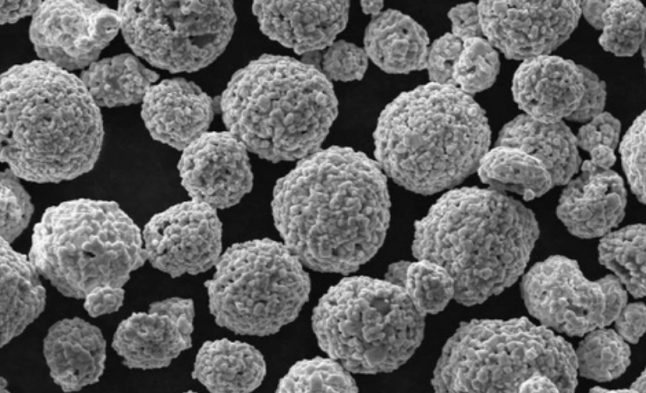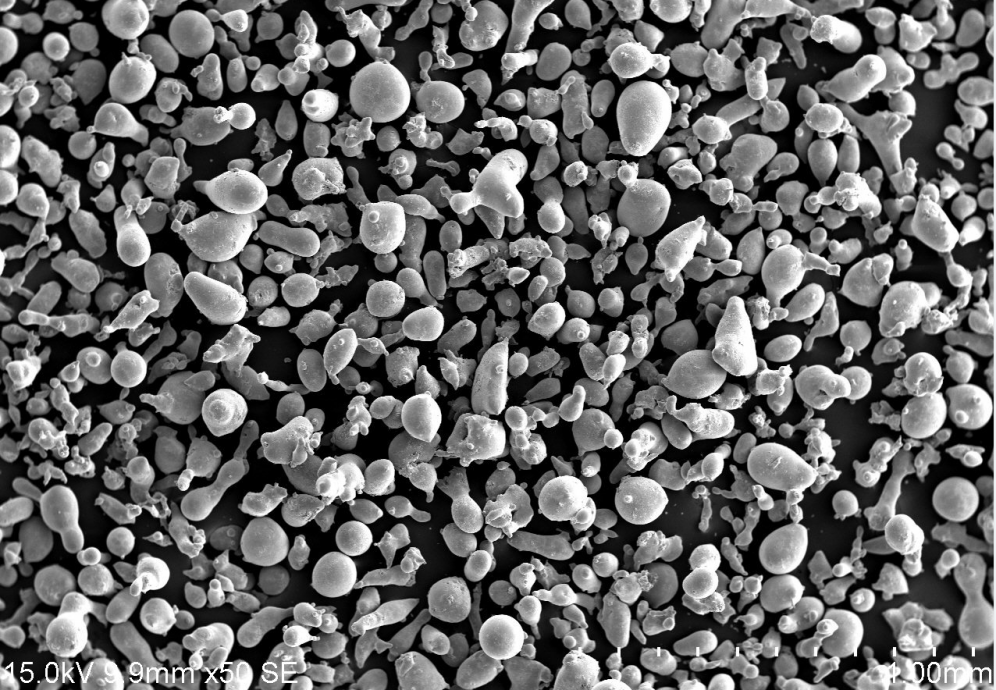Table of Contents
Togglehastelloy powders is a registered trademark name of Haynes International, Inc. referring to a family of corrosion-resistant nickel-based superalloys. Hastelloy powders are fine metal particles made from various Hastelloy alloys used primarily for additive manufacturing and welding applications where high strength, heat and corrosion resistance is needed.
Overview of Hastelloy Powders
Hastelloy powders provide exceptional structural stability and resistance to thermal creep deformation across a wide range of high temperatures. Key properties that make Hastelloy well-suited for additive manufacturing include:
- High strength maintained under prolonged exposure to extreme heat
- Outstanding corrosion resistance especially against oxidation and various acids
- Excellent fabrication characteristics allowing intricate designs with overhangs
- Dimensional stability during operation at both high and cryogenic temperatures
- Easy printability combined with good flowability and packing density
Hastelloy is available in several alloy variants optimized for specific conditions. The most common Hastelloy powders used in AM are nickel-based alloys Hastelloy X, Hastelloy C276 and Hastelloy C22.

Hastelloy Powder Types
Hastelloy Powder Compositions
| Alloy | Nickel (%) | Chromium (%) | Iron (%) | Molybdenum (%) | Other Key Elements |
|---|---|---|---|---|---|
| Hastelloy X | 47.5 min | 21.5 – 23.5 | 18.5 max | 9 – 10 | Cobalt, tungsten |
| Hastelloy C276 | Balance | 14.5 – 16.5 | 4 – 7 | 15.5 – 17 | Molybdenum, tungsten |
| Hastelloy C22 | Balance | 20 – 22.5 | 2.5 max | 12.5 – 14.5 | Chromium, tungsten |
Source: Haynes International Spec Sheets
The exact composition is controlled to balance properties like weldability, fabricability, and environmental cracking resistance for specific service conditions.
Key Characteristics of Popular Hastelloy Powders
| Alloy | Key Properties | Common Applications |
|---|---|---|
| Hastelloy X | Excellent high temp strength <1,200°C, oxidation resistance, thermal fatigue and creep resistance. Used for combustion liners, spray nozzles, thermowells. | Aircraft engines, industrial furnaces, nuclear & chemical processing equipment. |
| Hastelloy C276 | Superior corrosion resistance especially against pitting and crevice corrosion even in oxidizing acids. Used for valves, pumps, piping. | Chemical processing, pollution control, pulp & paper production. |
| Hastelloy C22 | Extremely high resistance to corrosion across many environments – both oxidizing and reducing. Used for condensers, heat exchangers, piping. | Chemical processing, flue gas desulfurization, waste treatment. |

Hastelloy Powder Specifications
Hastelloy powders must meet exacting size distribution and purity standards for reliable and repeatable printing results.
Size Distribution of Hastelloy Powders
| Mesh Size | Particle Diameter Range |
|---|---|
| 140x – 325 | 38 – 105 microns |
| 230x – 400 | 32 – 63 microns |
| 270x – 500 | 20 – 53 microns |
Narrow size distributions between 25-45 microns are most suitable for common laser/electron beam AM systems.
Purity Standards for Hastelloy Powders
| Impurity Element | Acceptable Limit |
|---|---|
| Oxygen (O2) | 0.06% max |
| Nitrogen (N2) | 0.10% max |
| Carbon (C) | 0.08% max |
High oxygen and nitrogen levels can cause porosity issues during printing. Limits help ensure dense, quality metal parts.
Hastelloy Powder Grades
| Grade | Description |
|---|---|
| Grade A | Meets all size, chemistry and lot consistency requirements. Used for most AM applications. |
| Grade B | Tighter size control and purity standards than Grade A. For more critical applications. |
| Grade C | Custom alloy development, high performance applications. |
Higher grade powders provide stricter quality control for regulated, high-risk applications.
Applications of Hastelloy Powders in AM
Thanks to their exceptional material properties, Hastelloy alloys are used across a wide range of demanding industries when fabricated using AM techniques.
Hastelloy Powder Applications by Industry
| Industry | Common Applications |
|---|---|
| Aerospace | Turbine blades, fuel nozzles, combustion liners and housings |
| Chemicals | Valves, pumps, reaction vessels, piping |
| Oil & Gas | Wellhead Christmas trees, downhole tools, valves |
| Automotive | Turbocharger housings, supercharger rotors |
| Medical | Surgical instruments, implants |
| Glass Molds | Molten glass contact surfaces |
Hastelloy’s unparalleled heat and corrosion resistance expands possible applications across diverse markets. AM enables complex parts unsuitable for traditional methods.
Comparison of AM Processes for Hastelloy Powder
| Process | Description | Benefits | Limitations |
|---|---|---|---|
| DMLS | Uses laser to selectively melt powder layer-by-layer based on CAD model. Most common metal AM process. | Combination of part complexity, speed and material properties makes it preferred choice for Hastelloy. | Limited sizes, slower than binder jetting, higher part cost. |
| LBM – EBM | Electron Beam Melting fuses metal powder with a high-power electron beam in vacuum. | Excellent material density and consistency. Large build volumes up to 1000 liter capacity. | Higher equipment cost, limited material choice compared to laser, slower build speeds. |
| Binder jetting | Liquid binding agent selectively dropped to join powder particles. | Extremely fast, unlimited part geometries, lower equipment cost. | Lower density parts requiring secondary sintering process. Limited material choices. |
Laser-based methods offer the best balance of part quality and flexibility for small to medium production runs. EBM and binder jet processes better suited for high volumes.
Hastelloy Powder Suppliers
Leading manufacturers providing high-quality Hastelloy metal powders include:
Hastelloy Powder Manufacturers
| Company | Powder Grade Options | Typical Pricing Range |
|---|---|---|
| Sandvik Osprey | Grades A-C, all common alloys | $90-$150/kg |
| Carpenter Additive | Grades A & B | $100-$180/kg |
| Hoganas | Grade A and custom | $75-$220/kg |
| Praxair | Grade A, select alloys | $80-$140/kg |
Prices vary based on order volume, size distribution, chemistry requirements and allowable impurity levels.

FAQ
What particle size is best for DMLS or laser powder bed fusion?
A particle size range of 25-45 microns is recommended, with median sizes between 30-40 microns optimal. This balances spreadability, flowability and high packing density needed for consistent, high-quality layers during printing.
Is Hastelloy powder reusable after printing?
Yes, Hastelloy powder can be collected, sieved and blended with additional fresh powder 3-5 times typically before needing to be replaced, making it very economical. Particle size or shape may shift over re-use cycles which must be monitored.
How many times can Hastelloy parts be re-melted during AM process?
2-3 melt cycles is recommended maximum for Hastelloy alloys to avoid compositional drift which hurts mechanical properties. After re-melting limit is reached, the material should be replaced with fresh powder.
Which Hastelloy grade has the best corrosion resistance?
Hastelloy C276 exhibits the most well-rounded corrosion resistance across various environments like oxidizing acids, chlorides, etc. making it the foremost corrosion resistant grade. Hastelloy C22 also extremely resistant. Grade selection depends on specific exposure conditions.
What are some examples of Hastelloy powder applications?
Common applications taking advantage of Hastelloy’s heat and corrosion resistance include aerospace combustion chambers, aircraft engine valves and fittings exposed to hot corrosive gases, industrial chemical processing equipment like pipes and tanks, pollution control heat exchangers, nuclear fuel handling and reprocessing systems, and oil/gas drilling tools.






